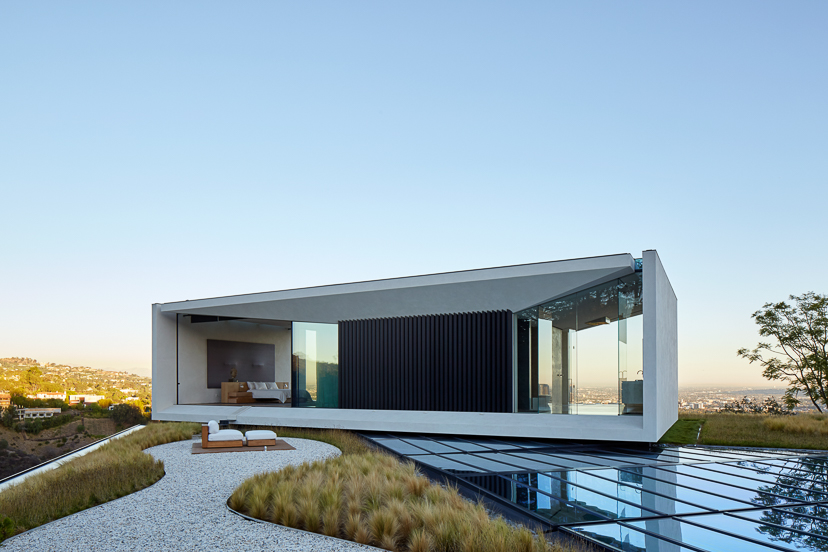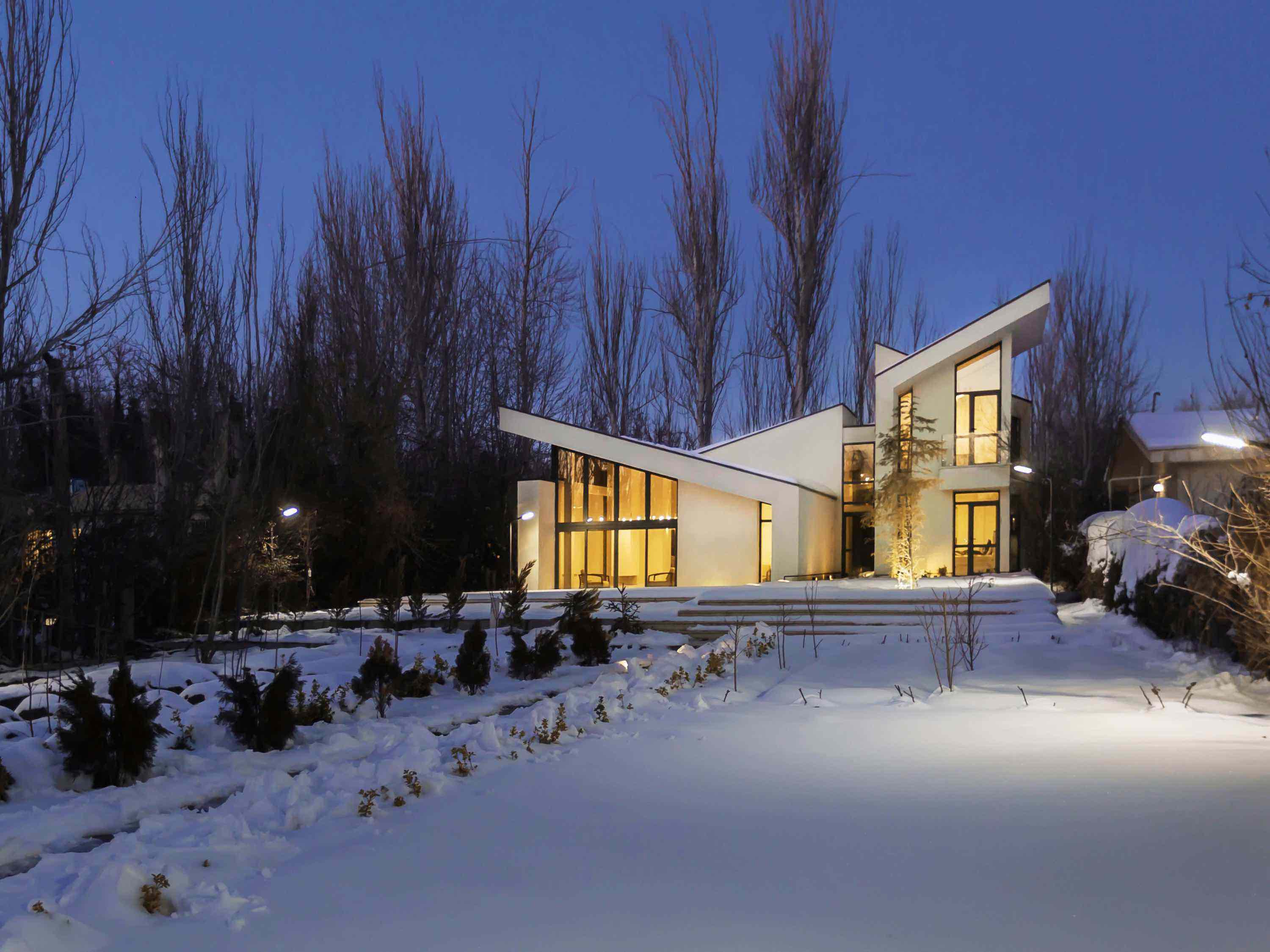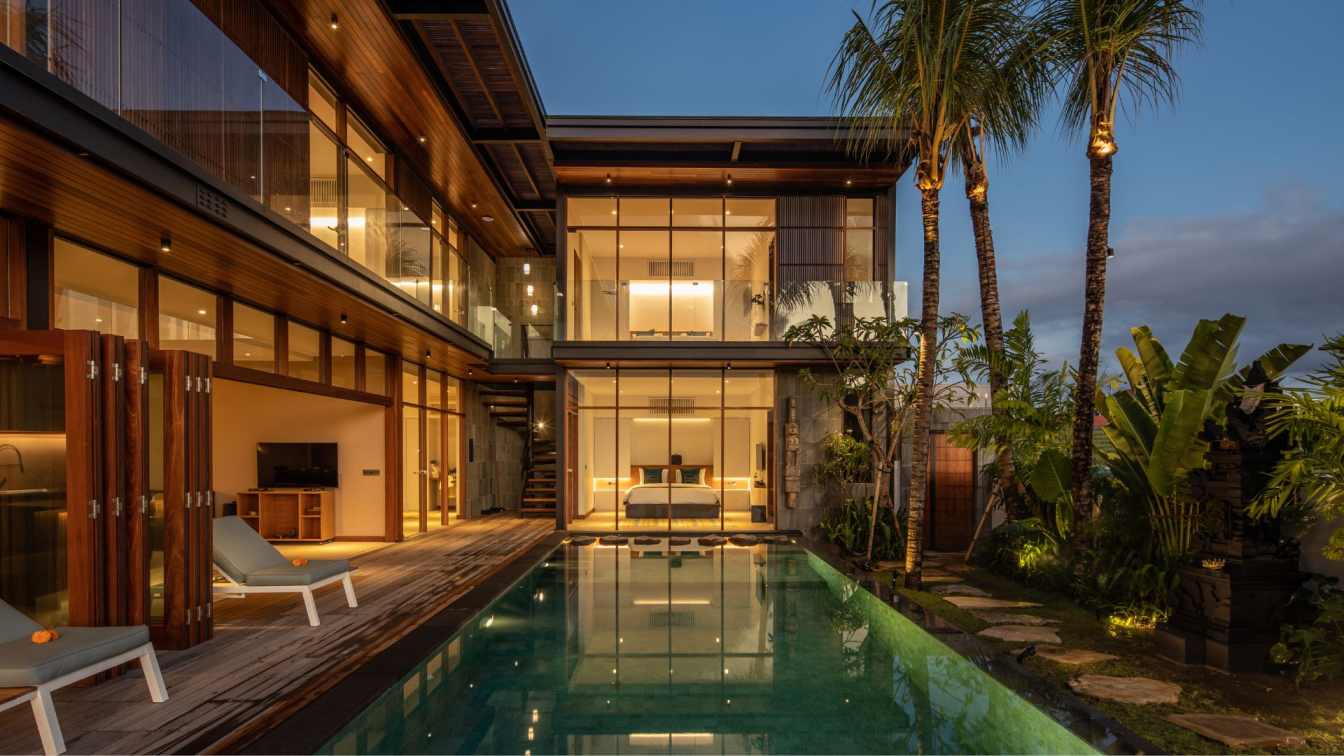New Interior Design Work by Zhang Haihua: A Poetic Dialogue Between Southern Chinese and Modernist Aesthetics. "Creating a garden is like writing a poem, one must introduce twists and turns using the correct method." --Qian Yong, Lu Yuan Cong Hua, circa Qing Dynasty
White pavilions, a gentle breeze, verdant grass and trees, covered bridges curving over clear water, picturesque scenery integrated with interior spaces: in classical Eastern aesthetic sensibilities, a courtyard provides peace and leisure, a place of joy and respite from the outside world. While traditional oriental aesthetics are somewhat removed from the contemporary urban experience in terms of style and form, their spirit remains relevant and provides an intriguing conceptual basis for the modern designer.
Located in the vicinity of Jiangsu Province’s famous Lake Tai, the project’s site occupies a space of over 1,000 square meters, 600 of which comprise a central courtyard. Surrounded by a modernist covered walkway and bounded by a series of pools, the courtyard visually and spatially connects to the interior spaces of the residence to which it belongs. Indoor and outdoor boundaries dissolve, the garden and the rooms adjacent to it echo one another, and people walk in the garden as if they were part of a painted composition.
Zhang Haihua has used minimalist principles to structure the project’s courtyard, removing any unneeded elements in order to create a space notable for its simplicity, elegance, and clarity. The water of the pool circumscribes the courtyard like a jade belt, bringing nature and architecture together into close, well-proportioned connection. People walking through and adjacent to the courtyard are introduced to a continual series of unexpected views due to the skillful modulations of the interior layout. Although the architectural language is one of Western modernism, the courtyard design subtly incorporates a sense of Oriental aesthetic refinement and a multifaceted garden experience.

The Means of Being "Seduced"
In "Architectural Atmosphere", Peter Zumthor once talked about the sensation that architectural spaces can evoke for people who experience them - that they have the potential for "creating a feeling of freedom of movement, an open state of mind in an environment of inquisitive wandering..." He likened it to a kind of subtle seduction, achieved through an understated yet focused attention to details, through which people are positively affected when entering the space. Upon stepping into this project’s vestibule leading to the courtyard, this idea of seduction becomes apparent with the grass becoming visible - seemingly barely restrained, it awakens an undercurrent of wildness to this relaxed, elegant atmosphere.
A descending stair invites an exploration to where it leads. Alongside the thick grass, they go unexpectedly deep, ending up at the residence’s basement floor level. There, the entrance to a spiral staircase of white marble presents itself. If one follows its steps, it leads back up to the main hall on the first floor.
Opposite the spiral staircase at basement level is an extended kitchen island, which, besides providing a place to socialize or drink, also acts as a spatial buffer when entering the residence from the adjacent garage. The custom-designed recessed light trough cut into the ceiling creates a unique visual effect in the overhead structure, emphasizing the role of light in this space. It also lends a directional aspect to this longitudinal room, indicating the route to the rest of the residence’s spaces and lending a modern element to an atmosphere which is warm and relaxing.
Upon following the designer's subtle invitation to the first floor, the lowered ceiling at the spiral stair’s white vestibule space imperceptibly frames the view into the living room. As one steps into the living room, an expansive open-plan space emerges into one’s field of view, as if a quiet and melodious piece of music has begun to play.

Flowing Space
During the mid-20th century, renowned architect Mies van der Rohe employed steel structures and glass facades to conceive a new kind of flowing space, creating simple designs that conveyed restraint, rationality, and order.
When this Western architectural concept of classic modernism meets with the Eastern garden's precept that “the imagination and the real combine to create new scenery with each step", it is notable that they each interpret the concept of "flow" in their own way. In order to merge these different yet complementary ideas, Zhang Haihua has employed a minimalist architectural aesthetic, while introducing changes in the opening and closing of the different spaces. By carefully modulating their degrees of transparency, each space is individually defined, while also interconnected to and flowing into the others.
These interconnected spaces present a fascinating range of variation in proportion, atmosphere, and materials, providing a surprising and enjoyable experience for anyone moving through the different rooms. The skillful blending of Eastern and Western sensibilities, and the synthesis of the ancient and modern here creates a new kind of combination of form and meaning.
People walking through the building and courtyard will discover there are no imposed circulation routes, because whenever an "end" is reached, a new surprising, unexpected route will open up. The minimalist floor-to-ceiling windows add a sense of transparency between the indoor and outdoor areas, allowing the interior spaces to extend beyond the walls of the building, into the natural surroundings beyond.

In line with the project’s structural minimalism and conceptual clarity, designer Zhang Haihua has also streamlined the overall selection of materials for the interior. This has resulted in a cohesive visual unity, further enhancing the sense of architectural flow in the various rooms and spaces. Organic materials are used throughout, the natural tones and texture of wood veneer giving the large open spaces a rich atmosphere of warmth and elegance.
A tall, curved wall clad in timber veneer encloses the sitting area at one end of the living room, with large floor-to-ceiling windows extending the indoor space to the paved external entrance area. Correspondingly, on the living room’s opposite side, a pair of circular columns, low ceiling, and floor-to-ceiling windows work together to frame a view which extends towards the courtyard’s outdoor pool and aquatic plants, creating an elegant tea tasting area where indoor and outdoor spaces are seamlessly integrated. The overall L-shaped space formed by the living room and kitchen area together is highlighted by the open atmosphere created by their views outward.
When looking down the length of the living room towards the courtyard, the covered verandah beyond acts like an invisible axis in the space, creating a soothing and peaceful symmetrical beauty. In the middle distance lies an exquisite scene of white walls, greenery, and sunlight, which passes through the entire living space, finally reaching a quiet pool of water by the window on the opposite side. Taken together, the spaces echo with layers of lush grass, hushed wind, and the invigorating sound of water, bringing close the calm beauty of nature.
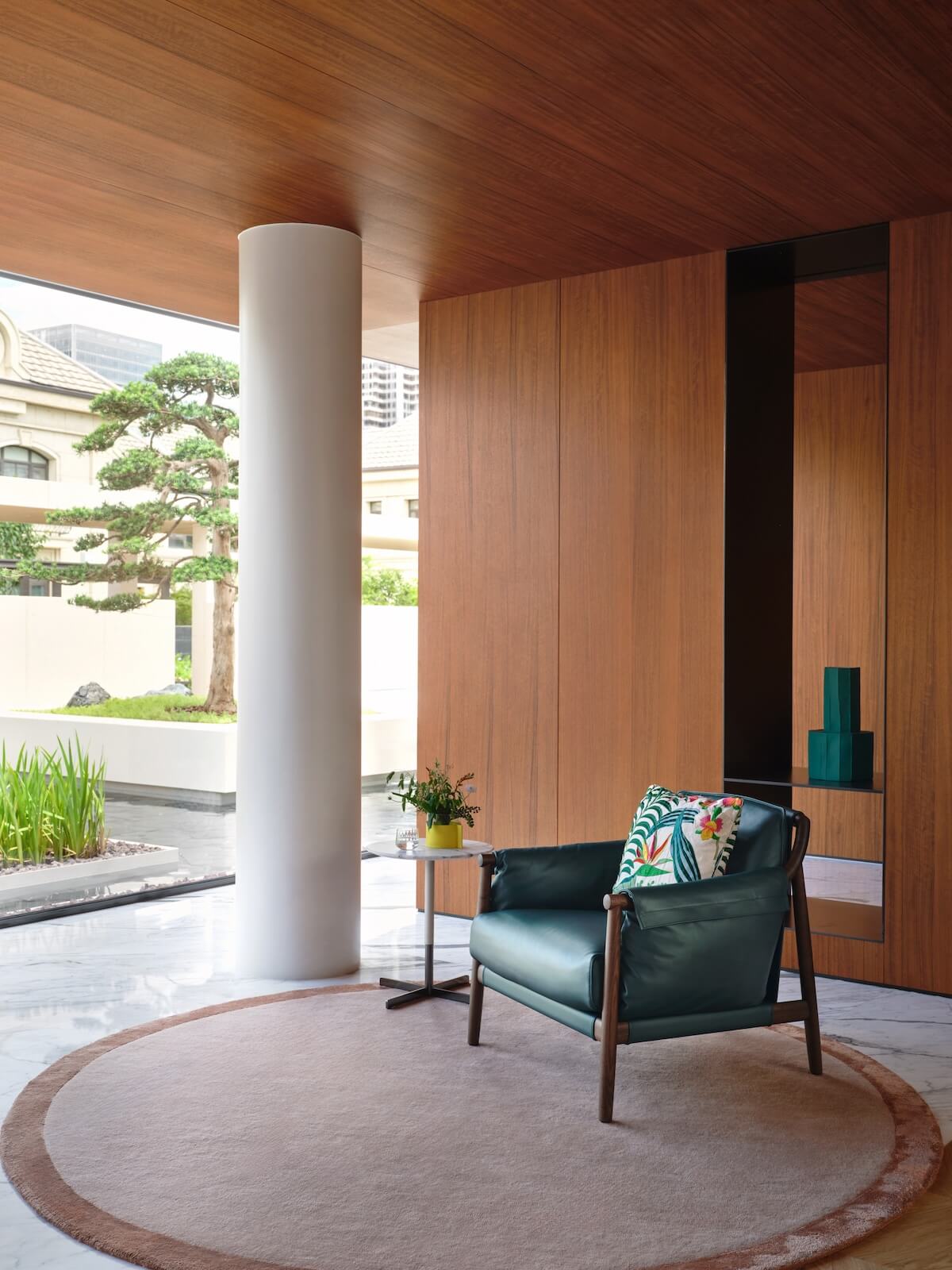
The Measure of All Things
Nature has no rules, but it abides by certain fundamental laws which give the sensation of correctness and beauty to those who experience it. This sensation may also represent a tipping point achievable through an architecture which satisfies people’s need for physical and mental well-being.
From the first moment one enters the space, a continual series of architectural elements and proportions designed to spark curiosity present themselves, creating an atmosphere that invites people to explore and discover. In the main living space of the house, a specially designed adjacent corridor with a low ceiling encircles and emphasizes the centrality of the living room, giving the spaces an intriguing rhythm of varying heights, and allows people to walk along it with a sensation of freedom and openness.
Where the living room window meets the courtyard pool, the ground floor height echoes the level of the water, while the surrounding wood veneer panels create a calm, comforting sense of spatial enclosure. When walking towards the dining room, one passes through a long, narrow corridor which gives a first impression of being quite narrow, only to widen and open up considerably after taking a few steps, with an unexpected influx of natural light.
The designer has also created areas which contrast with the open design of the overall space. The height of the windows has been carefully planned, in order to provide appropriate privacy, but also to consider the framed view from each one. For example, a long window extends horizontally, simply and elegantly framing a scroll painting of similar dimensions. Family or friends can gather around the dining table to eat and socialize while enjoying a clear view of the picturesque courtyard, a scene of natural warmth and pleasure.

The Exquisite Garden
The refined sensibility of Jiangnan-region aesthetics has always been inextricably linked to the natural environment. As far back as the Six Dynasties era, literati and poets wrote of elegant outdoor gatherings and the secluded life of hermits among the mountains, rivers, and wild vegetation, which became popular topics of conversation for later generations.
Whether it’s "high mountains, lush forests and bamboo" or "narrow roads, tall grass and trees, evening dew on my clothes", leisurely sophistication can always be adapted to synchronize with nature. The fertile growth of all things natural can add vitality to humanist endeavors, while humanist culture can give back to the natural environment, allowing refinement and elegance to grow over time and space.
Water serves as a ubiquitous and essential presence in the project, complemented throughout by a modernist verandah. Running alongside the various pools, the verandah provides an outdoor area perfect for easy relaxation, as it encircles the entire building, and connects all areas of the home, both visually and spatially.
A varied collection of water features, swimming pools, planted areas, and platforms of different heights adds immense sensory richness and multiple avenues for enjoyment.
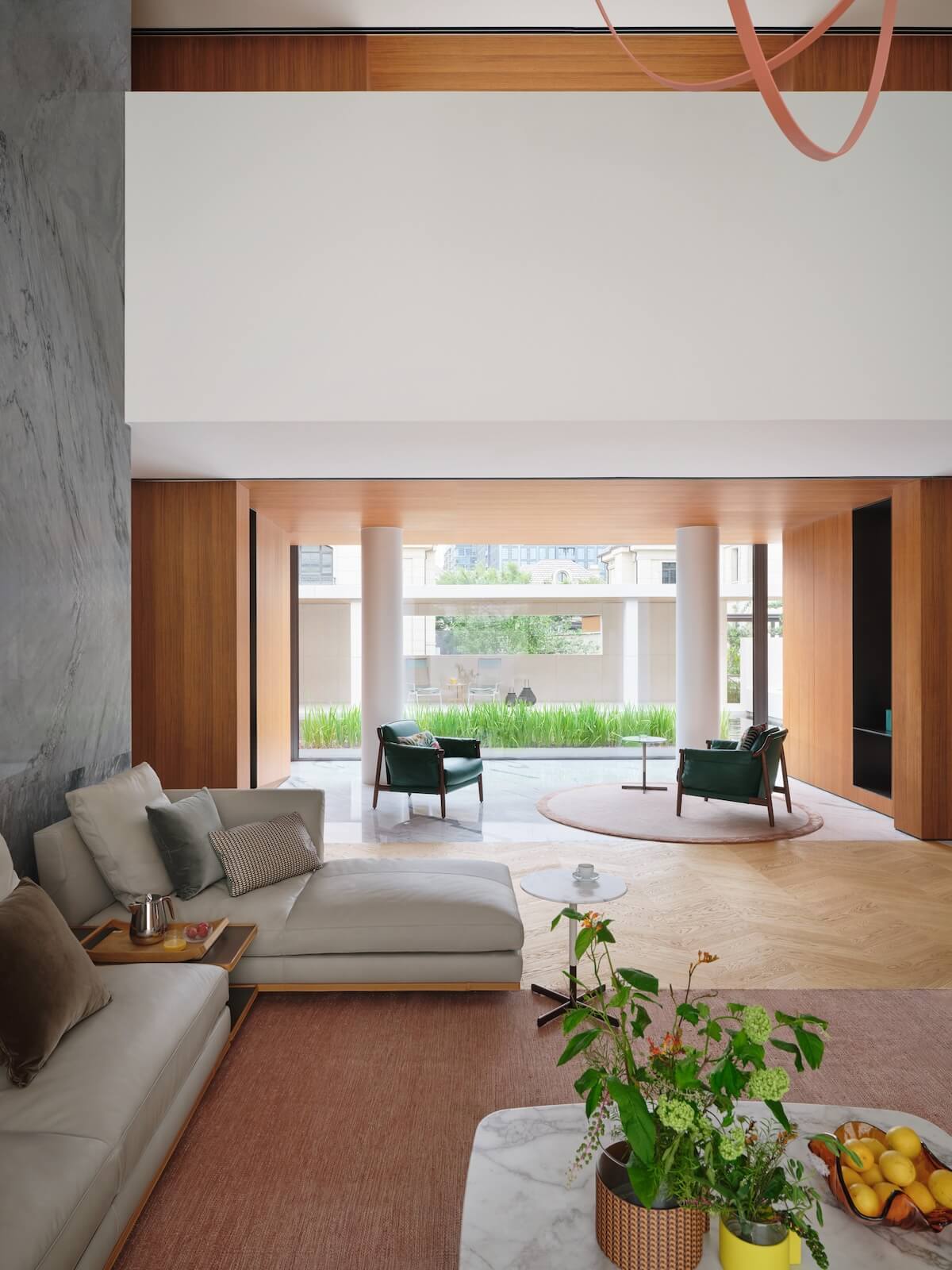
The Ming Dynasty artist Tang Yin once described the clarity and calmness of Taihu Lake as "a vast, boundless area, an immense illuminated surface of pure, green water." Through in-depth exploration and interpretation of the cultural heritage of the Jiangnan region’s ancient water towns, Zhang Haihua's work adapts and re-imagines the spirit and aesthetics of the poetic life of local literati, resulting in a timeless architecture unbound by style or trends.
Form may be reduced to simple appearance, but the core characteristics of oriental spirituality remain imprinted in the heart, lending implicit beauty to artistic conception to this day. Unbound by style, spiritual charm lives on in the hearts and minds of those inclined to create anew.
"Outside the door lies the mirror lake, the spring breeze cannot change the ancient waves." Time passes and the world rapidly changes, but all natural things remain vital, retaining the power to provide people with hope, openness, and peace of mind. Living in harmony with nature has served as the source of inspiration for Chinese writers for thousands of years, and is evident in the pursuit of the unity of nature and man in contemporary China. Today, diverse approaches are taken to convey this spirit, including the conscientious pursuit of design and architecture - akin to freehand brushwork, elegantly fusing contemporary forms and ancient charm.






















Zhang Haihua
Z+H interior design
Manager
Zhang Haihua has over 20 years of experience designing and planning high-end hotels, private residences, and art spaces. He has learned from Western design and culture, while also studying in-depth the essence of Chinese classical architecture and aesthetics, exploring the poetic transformation and expression of Chinese traditional culture in contemporary spaces.
Received the title of "TOP100 Most Influential Architects" by "AD Architectural Digest"
Recipient of the British FX Interior Design Award
Recipient of the Swiss BLT Architecture Design Award
Recipient of the German iF Design Award, among others


